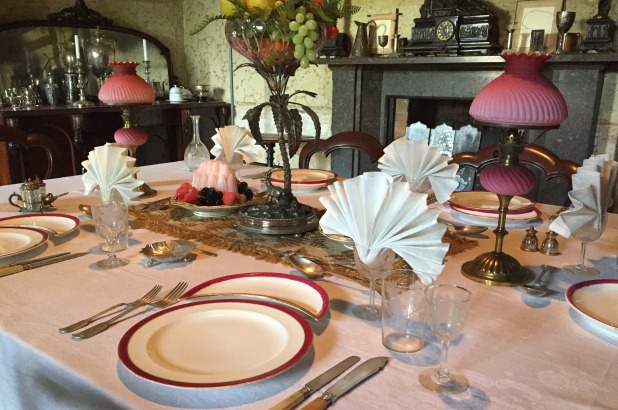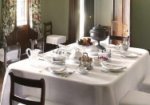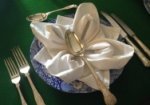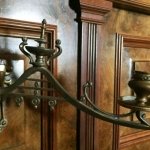If you’re out at Rouse Hill this weekend for the Autumn Harvest you may see the dining table set with some unusually-shaped dishes, can you guess what they’re for?
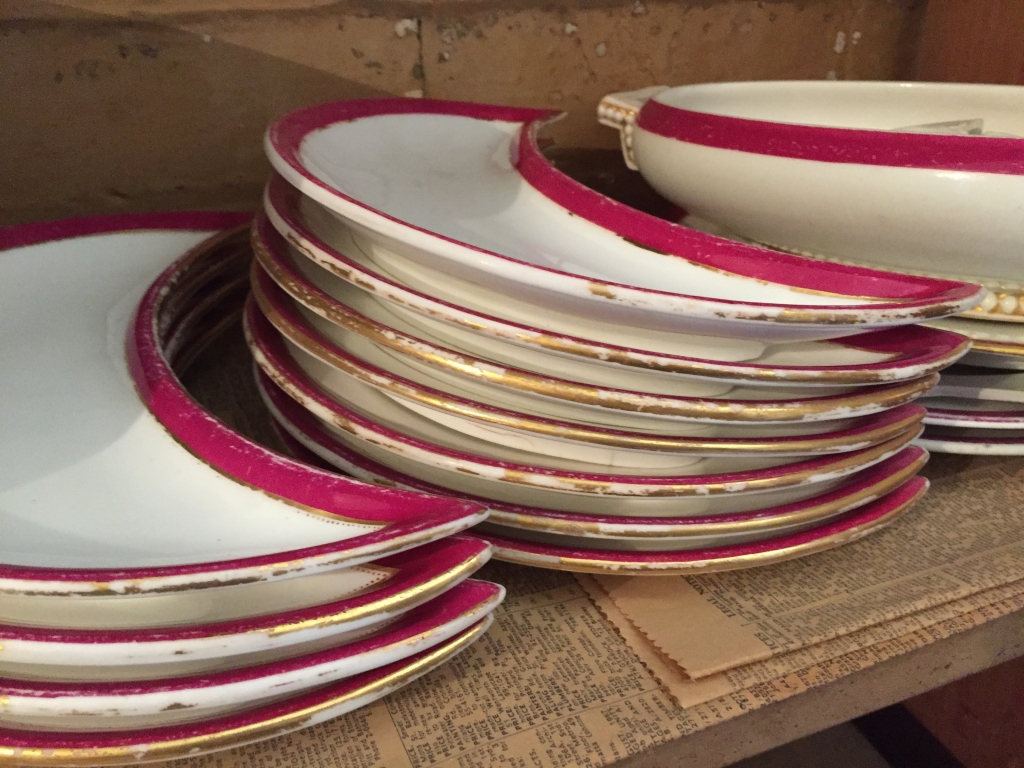
Bone plates from the Rouse Hill collection. Photo (c) Scott Hill for Sydney Living Museums
The service, much of which remains, is a plain white, with a carmine red border stripe and thin gilt border. In the storeroom is a large stack of these, with plates, side plates, platters, and a solitary bowl from a vegetable tureen. Though part of the set dates to the late 1800s, not all of it was acquired then. Nina Terry (1875 – 1968) apparently quite liked them, so her son Gerald (1904 – 1999) added pieces over the following decades.
Two stacks however are intriguing, as many will never have seen plates like these. Shaped like crescent-moons are they for bon-bons? Sweetmeats? (When I first saw these many years ago I assumed they were part of a dessert service). Their sheer number however – there are 11, so account for breakages and there may have been 14 or more originally – tells us they’re not incidental or decorative serving plates.
‘Dem bones, ‘dem bones!
These are ‘bone plates’; designed to nestle against the main plate where they are used to hold discarded fish bones.
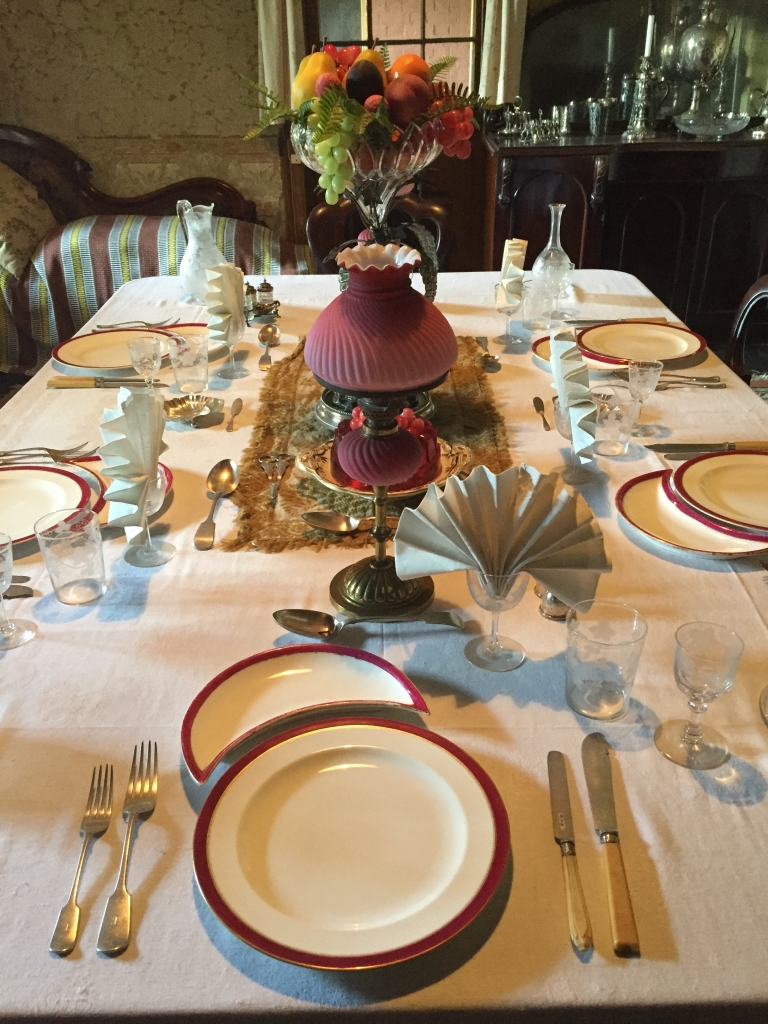
Place setting using a bone plate at Rouse Hill House. Photo (c) Scott Hill for Sydney Living Museums
There are surprisingly few references to these dishes that Ive been able to find, and even comprehensive histories of porcelain and dinnerware omit them. This 1890 reference gives a very clear rationale for the dish, not just for bones but for keeping one type of dish separate from another:
…[S]alad follows at once, and is also self-helped [i.e. self-seved] to a cold, small, round, or crescent shaped dish set at the left of, and close to, the hot one. This crescent is called a bone dish in America and, until recently, has been used for the small purpose that its name suggests, while its actual reason for being is, that cold and hot food may be eaten at the same time without injury to the flavour of either. Crescents, if of fine quality and pretty colour, are as ornamental as they are convenient. [1]
Abby Buchanan Longstreet, Dinners, Ceremonious and Unceremonious and the Modern Methods of Serving Them . F.A. Stokes & Brother, 1890
The standard custom was otherwise to simply move detritus – bones, potato skins etc – to the side of the main plate as it is today. Other references however, show how quickly they became unfashionable. One ive read suggests recycling them as decorative flower dishes arranged in a sinuous ‘chain’ on the table, holding moss into which blooms are pressed. This, from 1922, is by the well known Emily Post:
The crescent-shaped salad plate, made to fit at the side of the place plate, is seen rarely in fashionable houses. When two plates are made necessary by the serving of game or broiled chicken or squab, for which the plate should be very hot, at the same time as the salad which is cool, the crescent shaped plate is convenient in that it takes little room.
Emily Post, Etiquette in society in business in politics and at home. First published 1922, reprinted New York, Cosimo Books, 2007
Another suggests – wait for it – using such shaped dishes to catch any blood during a nasal procedure. [1]
To end this post, here’s a photo taken at a recent candlelight tour at Rouse Hill, showing the current, late 1890s-style table setting incorporating bone dishes. We have several of these each year at our various house museums, most recently at Elizabeth Farm. If you’d like to step back to the 19th century just subscribe to our e-newsletter, or keep an eye on our events pages. Better yet, become a member! If you’re at Rouse Hill for the Autumn Festival you can see them in person.
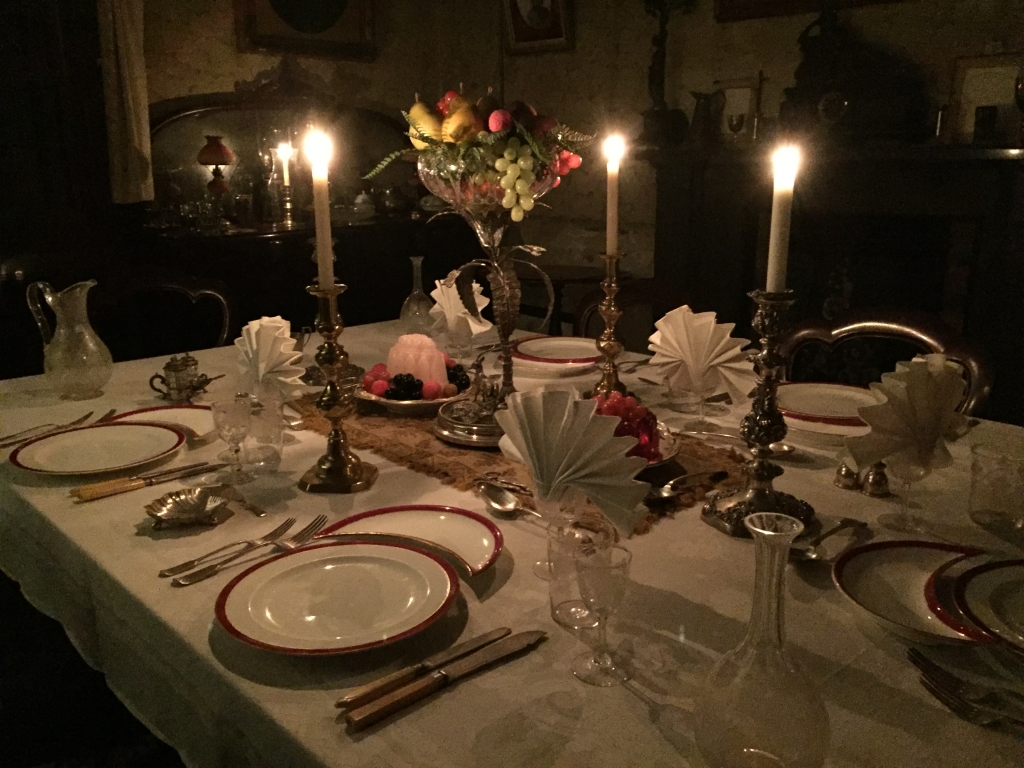
Rouse Hill House table setting at night_Photo (c) Scott Hill for Sydney Living Museums
Notes
[1] I’m not kidding! “If a cup or a bone dish shaped like a Crescent is held under the nose by the patient, the operation can be done without soiling the clothes.” Abscess of the Antrum of Highmore, with Cases and Their Treatment. 1894. In the interests of scientific research I tried an experiment, and these dishes do fit snuggly around my face.
